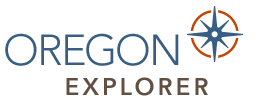 INSTITUTE FOR NATURAL RESOURCES
INSTITUTE FOR NATURAL RESOURCESYou are here
Aquaculture
Forestry and Agriculture
- Intro
- Planning Resources
- Research Projects
- Articles & Stories
- Maps & Tools
- Reports & Publications
- Data
- Photos & Videos
- More
Aquaculture System Overview: Sturgeon Recirculating System (RAS)
Introduction
Like any agriculture production system, sturgeon recirculating systems requires inputs including capital, land, and water resources. They also require development of output markets that have been thoroughly sourced and researched. Identifying and evaluating output market demand with respect to product quantity and product characteristics is a critical element of aquaculture financial planning. A “MARKET FIRST” approach can help investors maximize aquaculture business opportunities by developing an integrated business plan that matches production resources, species, and systems with output market requirements.
Organism: Sturgeon
There are over two dozen species of sturgeon. Culture on the West Coast often targets the white sturgeon, Acipenser transmontanus—also called the Oregon, Pacific, or Sacramento sturgeon. However, the green sturgeon, Acipenser medirostris, may also be considered as a possible culture organism although this fish is listed as an endangered species. These elongated bottom-dwelling fishes can reach nearly 20 feet in length and have weights of over 1,000 pounds with a lifespan averaging more than 80 years—sexual maturity for males around 16 years of age and females taking more than 20 years. Sturgeon are ancient cartilaginous fishes best known as the source of caviar but also raised as a “meat fish.” Our focus is on sturgeon for meat production.
Sturgeon have relatively broad environmental tolerances. Optimum temperature for growout is 68-79℉ with spawning occurring at 50-68℉. As anadromous fishes, they can accommodate varying levels of salinity. Recommended water quality for culture include pH of 6.5-8.5 and an alkalinity and hardness of 50-400 ppm as CaCO3. Dissolved oxygen should be above 5 ppm.
Specific sturgeon feeds are available. These sinking extruded pellets range from 3-8 mm with a crude protein content of 44-46%. Feeding rates as high as 4% per day have been reported but most frequently rates are 1-2% of biomass daily. The fishes have a short digestive systems and multiple feedings throughout the day are optimal.
Harvest size for meat is generally at an individual weight of 3-12 pounds (1,300-5,400 g)—one to three years required to reach this size. Dress-out is 70% for “bullet” (head, organs and fins removed) and 40% for fillets. Smoking is a value-addition option. Globally, there are a reported 2,329 sturgeon farms (most outside the US); 21% of which rely on RAS technologies. For all farms and all species of sturgeon, 102,327 tons of fish were produced in 2017.
Production Methods: Recirculating Systems (RAS)
RAS reuse the same water to grow the crop of fish. The water is circulated through filters to remove wastes. Oxygen may also be added to ensure satisfactory dissolved oxygen levels. As the water circulates new, or “make up” water will be added to replace water lost by evaporation as well as to dilute any dissolved wastes not removed by filtration. In extreme cases, more than 50% of the system’s water volume may be replaced daily with systems with low-level filtration replacing roughly 30% per day. However, most modern units with efficient filtration replace 5-15% per day.
Recirculating systems may be enclosed in a building—the structure allowing for environmental control as well as control of escapement and predation. Indigenous fishes, adapted to local conditions, may also be raised in the open if adequate measures are taken regarding escapement and predation. The RAS tanks may be fiberglass, plastic, stainless-steel, concrete, or concrete block, or even wood with impermeable liners. Ideally, the size and number of grow-out tanks need to be linked to the marketing strategy. If much of the fish handling is to be done manually, the tanks need to be constructed/installed so that nets and other tools can be conveniently used. Space is important and it is necessary to be able to have easy access to all the facilities.
Circular tanks are often used with a 20–30-foot diameter. To ensure optimal self-cleaning, recommendations for the ratio of diameter to depth of tanks range from 3:1 to 10:1 (e.g., a 20-foot tank would be approximately 5-6 feet deep). Fish densities in tanks would range from 0.3-1.0 pounds per gallon with an average of 0.50-0.75 pounds per gallon.
Unique to Oregon
Unlike many culture organisms considered for aqua farming in Oregon, sturgeon are indigenous. Nevertheless, they are also under special control by the Oregon Department of Fish and Wildlife and any efforts to initiate culturing white or green sturgeon must first be addressed to ODF&W (https://www.dfw.state.or.us/fish/license_permits_apps/sturgeon_propagation_license_process.asp).
As with other aquaculture investments in the state, geothermal energy many be a unique resource for temperature control. There may also be other unique opportunities using shuttered industrial sites that could provide other resources for developing into a new aquaculture enterprise. For land use, aquaculture is a conditional use, and it is necessary to check with local and state authorities (link). Similar homework is necessary regarding water use and effluent management. The interface for land and water is the watershed; both at the local and basin levels. For operators purchasing sturgeon seed, hatcheries are available both in- and out-of-state (seed suppliers). For out-of-state purchases, there will likely be additional regulations. Sturgeon feeds can be purchased from several mills (feed mills).
Selected References:
- https://www.fao.org/fishery/culturedspecies/search/en
- https://awsassets.panda.org/downloads/18_2007_farmedsturgeonreport_tzankova_usa_1.pdf
- https://s.giannini.ucop.edu/uploads/giannini_public/84/78/8478bc22-689c-4959-a326-99017a9bf17f/335-sturgeon.pdf
- https://openknowledge.fao.org
- https://www.dfw.state.or.us/fish/license_permits_apps/docs/Sturgeon%20Manual.pdf
- https://fisheries.tamu.edu/files/2013/09/SRAC-Publication-No.-7200-Species-Profile-Production-of-Sturgeon1.pdf
- https://www.biomar.com/globalassets/.global/pdf-files/datasheets/-denmark/sturgeon/en-dk-efico-sigma-811-3-8-mm-sturgeon.pdf
- https://www.researchgate.net/publication/232850458_Optimum_Feeding_Rate_of_White_Sturgeon_Acipenser_transmontanus_Yearlings_Under_Commercial_Production_Conditions
- https://www.oregonlive.com/environment/2021/08/coming-soon-to-a-plate-near-you-farm-raised-sturgeon.html
- https://www.oregonroyalsturgeoncompany.com
- https://www.zeiglerfeed.com/finfish/sturgeon-diets/
- http://mresourcegroup.com/rangen/sturgeonfeeds.htm












